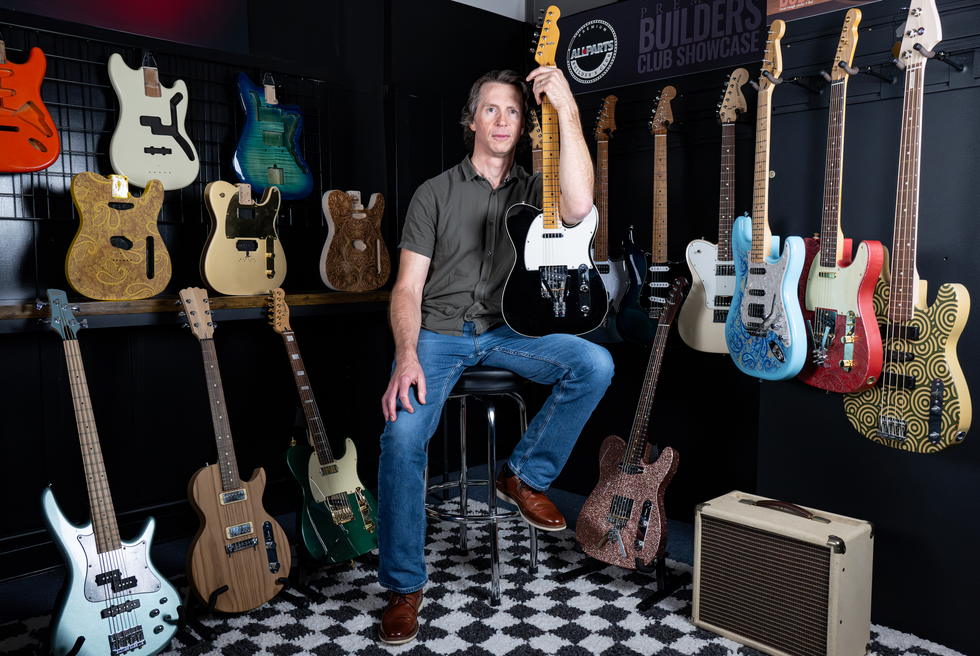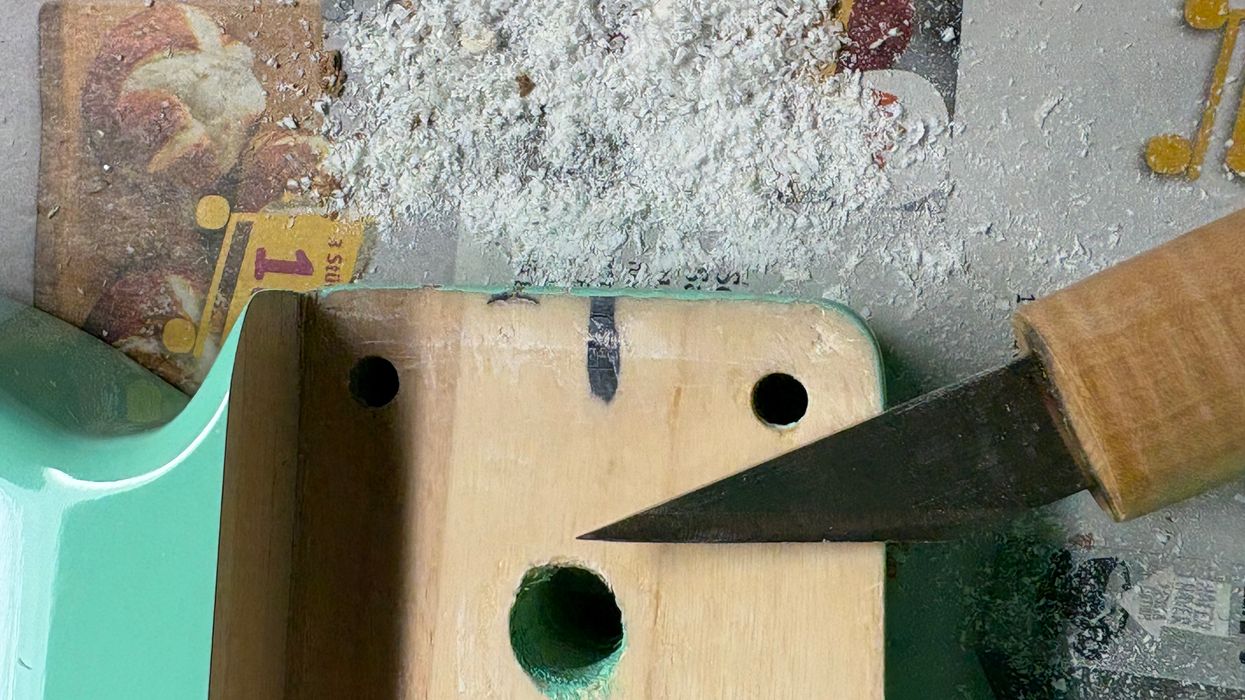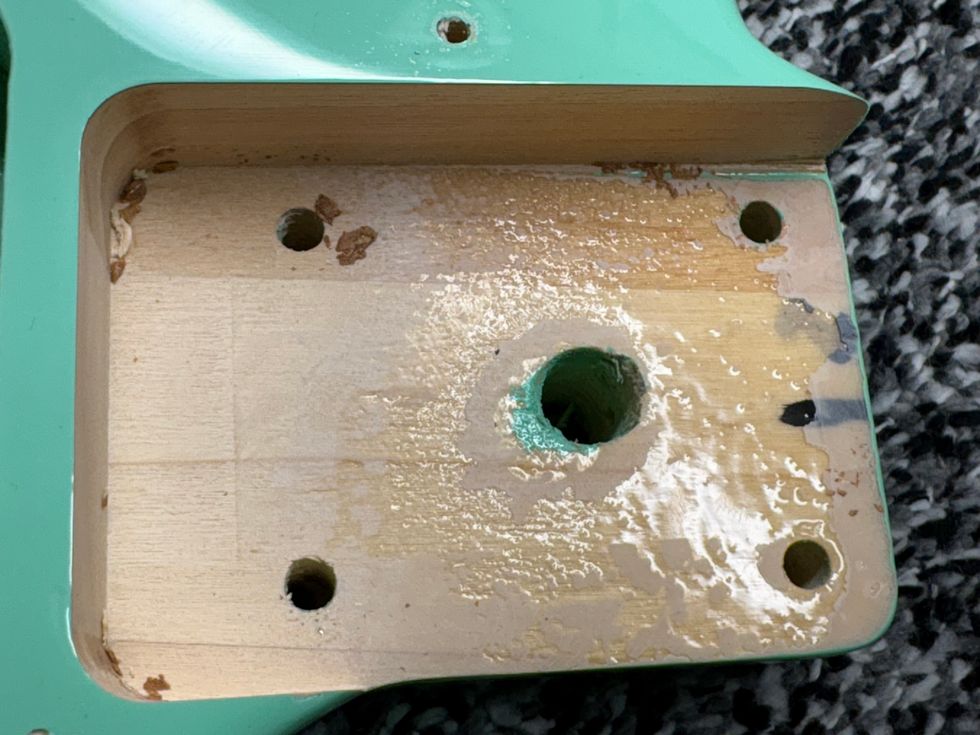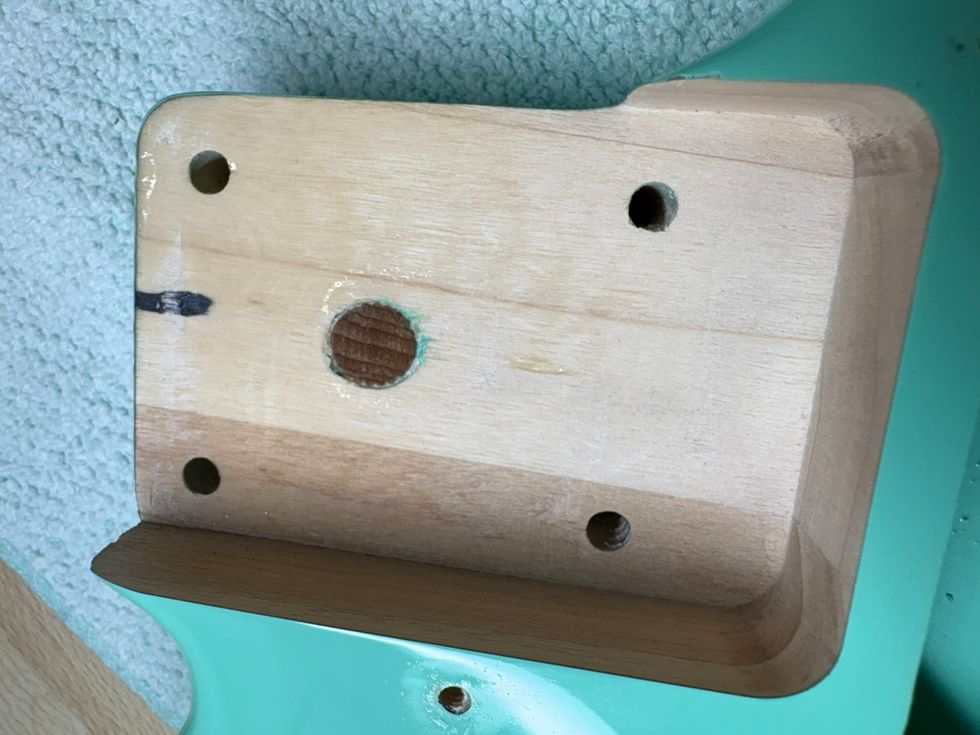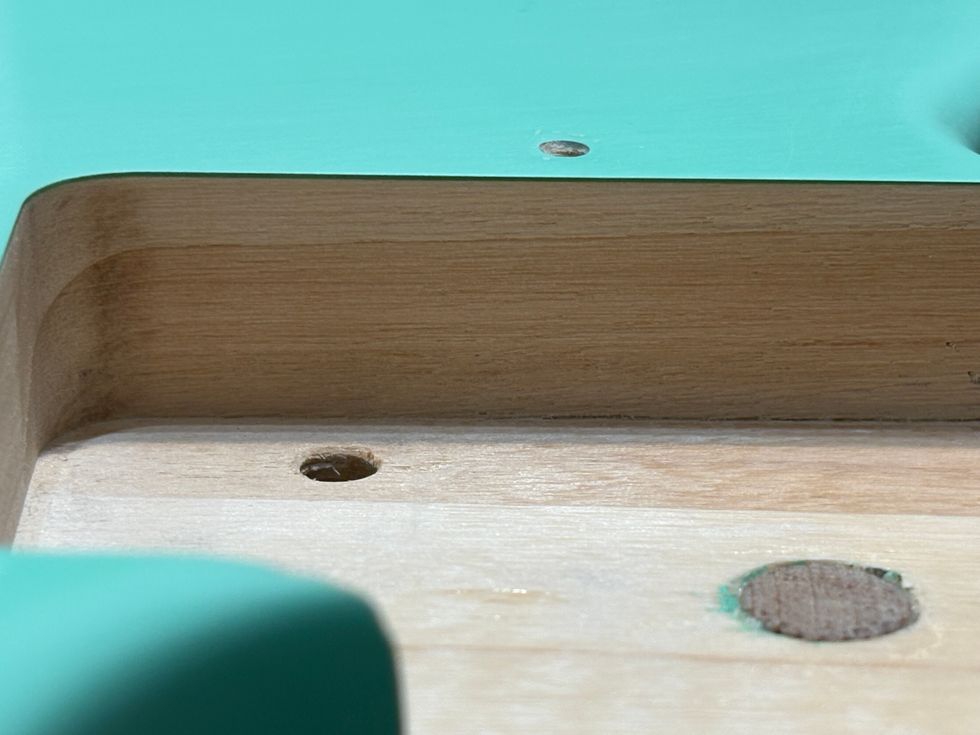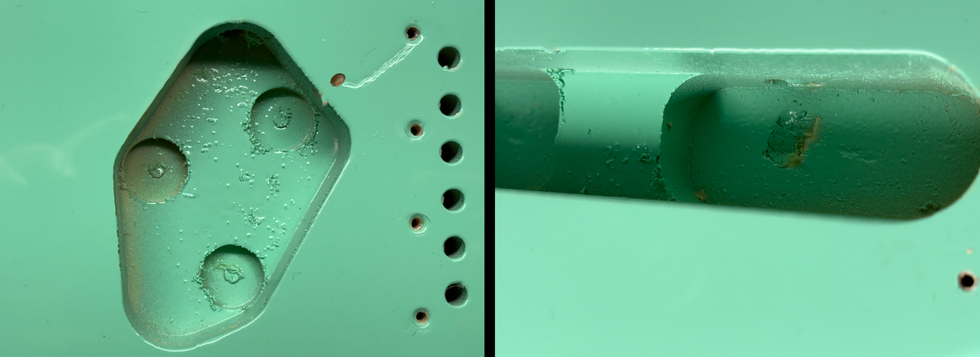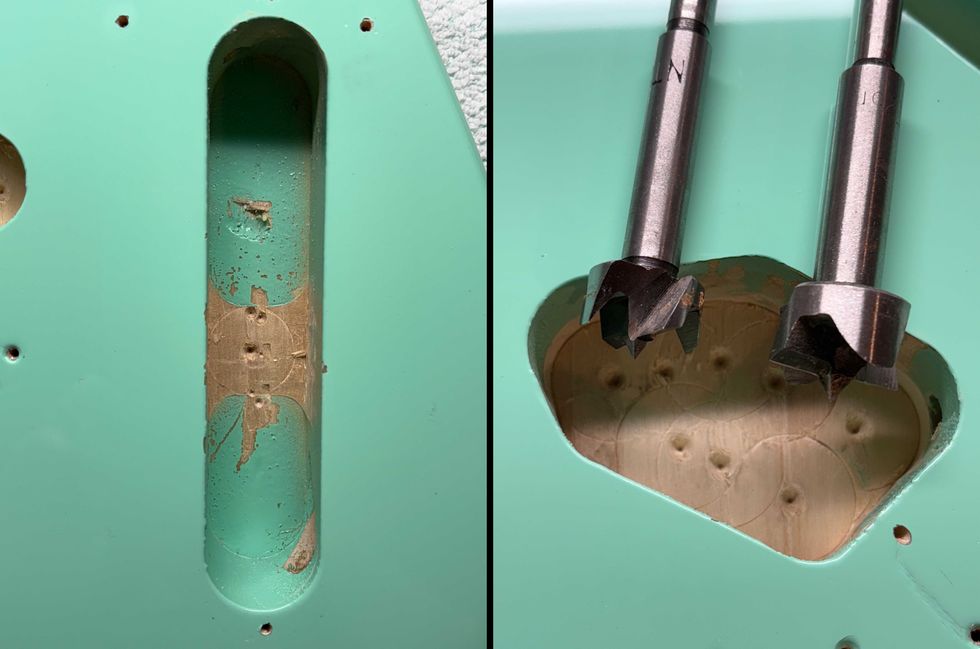Note from the Editors: While exploring the “Psychology of Tone” last
month, we learned that digging into the mushiest part of any signal
chain (the listener’s noodle) leads to a better understanding of the
tonal journey involved. The journey itself may be more important than
you realize. We continue this series dedicated to messing with your
head with a look at the science involved with the creation of those
tones. Everything can be explained with science, right?
The Ford Model T was revolutionary. The only horses involved were under the hood, which was a big enough deal at the time, but we now know that the assembly line process behind it would go on to revolutionize the way we manufacture tools, vehicles, and the rest of our modern appurtenances. In all honesty, the Model T had a long way to go. Consider how that horseless carriage would hold up today. When we put nostalgia and historic significance aside, it’s the last car you’d want take a long trip in or depend on for daily commutes. From a modern day performance perspective, the Ford Model T was garbage.
Now think about all the advances in guitar technology that we’ve witnessed over the decades—how much smarter we are now when it comes to acoustics, electronics and precision manufacturing? Sticking with this metaphor, isn’t it a bit crazy that we place such high value on the early designs that represent the Model T-era of the electric guitar’s evolution? We’re not just talking nostalgia and historic significance here—ask most guitarists to name the most amazing, best-sounding electric guitars ever made, and they’ll go all the way back to early-fifties Broadcasters, late-fifties Les Pauls, and early-sixties Stratocasters. Guitarists cling to the tones produced by what is, essentially, first generation technology.
Fender released the first successful solidbody electric guitar, the Broadcaster, in 1950. (Remember, the original Esquires were problematic.) Gibson produced the first Les Paul 24 months later. And a mere six years after that, a small run of sunburst Les Pauls flowed out of Gibson’s Kalamazoo, Michigan factory. Originally just another instrument, those Les Pauls now occupy a mythic status in the minds of guitarists and collectors everywhere. The instruments, along with a small handful of Fender Stratocasters and examples from one or two other manufacturers from roughly the same era, represent the Holy Grail in guitar tones.
To understand why these early guitar tones continue to be so revered—after decades of technological progress— we have to understand the science. Or more accurately, we have to confront a distressing lack of scientific proof.
The Dominance of the Subjective
When discussing the science of tone, it’s safe to assume that we all know how electric guitars work. Pickups are electro-magnets that sense string vibrations and produce a signal that ultimately blares out of the amplifier. Of course, we all know that myriad other factors influence the sound, as well. Body shape, wood choice, string selection, pedal effects, rack effects, humidity, amount of people in the room, and the guitar player’s recent fight with his girlfriend are just some of the items that can alter a guitar tone from performance to performance.
Can you scientifically prove the role of these influencers? Lab geeks and gadget gurus can measure signal strength, decibels, frequency distribution, gamma radiation, and other ranges. They can graph this data, create new data by creating logarithms, create even more data by creating even more logarithims, but they can’t decide what’s good or bad. Like it or not, you simply can not use a computer to prove that a ’63 Strat sounds “better” than a cheap 1988 import.
The Musical Acoustics Department at the University of New South Wales unequivocally states on their website that, “Whether a musical instrument is good or poor is a question for musicians rather the scientists.” That’s because scientists are primarily examining the effectiveness of an instrument.
Numerous sources, such as Physics by John D. Cutnell and Kenneth W. Johnson, state that the human ear can hear sounds ranging from 20 hertz to 20,000 hertz. A guitar is going to fall in this range because it wouldn’t make good business sense to produce an instrument that can only be heard by dogs. From a scientific perspective, just about everything within the normal human range would be considered effective, since the instrument accomplishes its goal. Beyond that, a researcher wouldn’t be able to designate what’s good.
It’s important to note in this discussion that loudness, generally measured with decibels, could potentially be labeled “good” or “bad” in so far as certain levels are known to usually produce pain in humans. For example, the United States government’s Occupational Safety & Health Administration (OSHA) regulates how employers and workers behave around noise levels that approach 85 decibels. As music fans, we may boast about how the Slayer concert caused our ears to bleed, but sling a jack hammer or stand under 747 jet engines for eight hours a day and see how fun those loudness levels are. But that’s volume, not quality of tone.
With an entire industry surviving off musicians’ insatiable desire for the ultimate guitar tone, it seems obvious that some company would have cracked the code for the greatness. After all, corporate chain restaurants can quantify that if they use X of fat, Y of salt, and Z of sweet in their latest enormo-burger, then consumers across the country will salivate. Unfortunately, it’s not that simple with music.
“Music is ineffable,” says Scott Waara, product manager at Line 6. His company has built a business around providing the widest range of tones possible to guitar players. But even for a firm dedicated to dissecting tone, it’s not easy to reduce things to a simple recipe. “Everybody hears differently,” Waara says, “and the frequency response of everyone’s brain is different, so some things that are cool to some guys are not going to be cool to other guys. You can put it on a scope and see what’s happening on a frequency graph and you’ll see some tendencies and trends and so on.” The trends seen by the Line 6 staff seem to indicate that warmer, fuller tones are more generally accepted and considered “good.”
“Tone that emulates the human voice is always more accessible,” Waara continues. “Otherwise, purely electronic music would have taken over, and we wouldn’t be making guitars anymore. There are some absolutes in human DNA about wanting to feel connection and that’s probably a fuller frequency tone, that’s tone that is more reminiscent of the human voice. Or, for instance, a violin or organic instruments that have been around for hundreds of years. When we talk about guitars having an organic quality, it’s because that’s rooted in what human beings know. Which is air moving, wood vibrating, people speaking.”
Beyond those generalities, replicating a standard formula for the be-all-end-all tone isn’t possible. Why? Because some people will genuinely pass on a ’59 Les Paul and Marshall stack combination—they might prefer what sounds like a vibraphone under water. Sometimes, a certain “it” factor just grabs musicians and won’t let them go. Waara explains that even in a business as technologically advanced and specialized as Line 6’s tone research, “There’s no escaping that we emotionally say ’Man, that just sounds cool.’ ” Frequently, part of that “cool” factor is imprinted on our brains as a result of a component that we often overlook.
The Forgotten Factor
When guitarists sit around and debate tone, they pontificate on the properties of this instrument or that amp. But frequently there’s a factor in the equation that is forgotten. Our templates of what we consider to be great tone are not simply a formula of instrument + amps + musician. Recording studios also play a vital role in the creation of those sounds.
“Most guitarists learn from records,” says Dr. Andre Millard, a professor at the University of Alabama-Birmingham, editor of The Electric Guitar: A History of an American Icon. “That’s how you learn to play. We learn from the classic records. And those classic records have that classic tone, which is ’58 to ’63.” And quite frequently, Millard points out, the studio had as much an impact on those recordings as anything else. He uses the Rolling Stone’s debut, England’s Newest Hit Makers which was released on London Records in 1964, as an example.
“It had ‘Walking the Dog,’ ‘Route 66,’ and others on it,” Millard says. “That has tone. The reason it has tone is that it was made in the worst damn studio possible. Everyone who worked there said this was a shithole. There was no sound separation, they used lousy mics, they never cleaned it. Andrew Loog Oldham, who was the manager at that point, said that was the key to the sound.”
But the question remains, was that environment good for the artists or for the equipment? Think of it this way: experienced chefs know very well the value of a seasoned pan or grill. Flip on any show from the Food Network and you’ll see cooks bragging about their 30-year-old griddle and how it imparts an amazing flavor to their corned beef hash. Preparing food leaves behind actual physical substances, unlike immaterial sound waves, so that comparison doesn’t work exactly. But the dirt and dust and grime could certainly effect the equipment. In a similar way, we have to ask ourselves, was that dirty studio, then, a source of inspiration or were the dirty, beer-smelling microphones actually improving the music? Regardless, the studio imbued the recording with an undeniable quality. Many guitar nuts can identify a particular instrument while listening to a song. Recording experts can do the same thing with studios.
“Back in the fifties and sixties, you could tell what studio they had been recording in just by listening to the song,” Dr. Susan Horning Schmidt says. She is a professor at St. John’s University who has researched and written extensively about sounds and the recording process. During the period Dr. Horning Schmidt is referring to, the recording facilities were also physically bigger and bands often played together in a more live-type setting. Horning Schmidt states that “there’s a lot more space in the recording, a lot more acoustical space and dynamics.” Unfortunately, we’re losing that space with contemporary recording and production techniques.
However, even for recording experts who can discern if something was done at Columbia Records Studio A or Olympic or wherever, it’s challenging to define a percentage of influence that the studio provides. “I don’t know that you can measure it in any way. It’s really more an ineffable quality of sound and aesthetics,” Horning Schmidt says. “You can measure frequency response and you can measure decibels but in my research I’ve found that back in the thirties and forties, you had engineers saying ‘you can’t just go by the meters. You have to use your ears.’”
This happens when discussing variables within a number of different art forms—you simply can’t rely on scientific equipment to make some assessments. You can’t trust the gadgets; instead, you have to rely on your ears. Even relying on your ears can be difficult because it is, once again, a subjective discussion. “We don’t hear what’s out there,” Millard says. “We hear what we think we hear. It’s the psychological or neurological way we hear. To think we hear what sound is out there is so naïve and so wrong.” Trustworthiness aside, this brings us to another concept that pops up frequently when discussing the nature of tone: the role of good old fashioned, organic, human beings.
The Human Element
As part of his Alien Music Secrets course, virtuoso Steve Vai often talks about a day when Eddie Van Halen paid him a visit. EVH stood in Vai’s home studio, picked up Vai’s guitar, played it through Vai’s effects, through Vai’s amps, and out came the classic Van Halen tone.
Similar stories abound—you can simply substitute Big Name Guitar Player X in any number of variations. In The Million Dollar Les Paul: In Search of the Most Valuable Guitar in the World, author Tony Bacon quotes an expert in guitar restoration who uses Jimi Hendrix as an example.
“He played an SG, a Les Paul, a Flying V, as well as a Stratocaster, but he always sounded like Hendrix,” Clive Brown states. “He didn’t suddenly sound like Jimmy Page because he played a Les Paul. That’s where everybody’s perception seems to go wrong. It’s the playing, and not necessarily the guitar.” In spite of an entire multi-million dollar industry revolving around selling musicians the latest gear, and in spite of thousands of axeslingers, aspiring and acclaimed alike, who readily gobble up that gear, it all seems to boil down to two implements— and we’re born with those.
“The tone thing is amazing because you can have one rig, have three different guitar players, and each guy can play the same exact thing and it’s going to sound different,” says L.A. Guns guitarist Stacey Blades. “It’s all in the hands.” Waara from Line 6 agrees. “Any guitar player will tell you, at the end of the day, it’s in your hands and you will sound like you will sound,” he says. The percentage of influence the hands wield is shockingly high.
Berklee College of Music professor Thaddeus Hogarth thinks the hands and the human element accounts for almost all of what we consider guitar tone. “Providing the instrumentation and the amplifiers are above a certain quality and in the general ballpark, I think it’s safe to say that we’re talking 90 perecent,” Hogarth says. In his classes and on his blog, The Quest for Good Guitar Tone, Hogarth argues that much of a guitar player’s tone is based upon the attack more so than the sustain. “If you take away the first second of the attack of a note played on any instrument, it is often very difficult to determine what that instrument is and certainly impossible to identify who played it,” he writes on the blog.
“It is the initial attack that the listener uses to identify a sound, since, if the sustain is removed, it is perceived only as that but does not make the sound difficult to identify,” says Hogarth.
Of course, as guitar players we still want to remain open to a number of tonal aspects that happen after the front end of the initial attack. These elements aren’t necessarily in the front part of the very beginning of a guitar tone, nor are they delegated to the trail of lingering sustain. “The reason why people sound a certain way is because of little nuances, those little pull offs, those hammer ons, those plucking [dynamics]— the sequence of those things. Think of it as a sonic palette. That sequence is what makes the artist sound like himself.”
By deleting the front part of a note, Hogarth has an intriguing and innovative teaching mechanism to convey the concept that the human element is all powerful in the quest for good tone.
Ultimately, his thesis is shared by every single person interviewed for this article. It simply does not appear that there’s any way to objectively measure what is “good” guitar tone. A major reason for that is the infinitely varied human element of the musician performing and the audience listening. The impossibility of proving anything doesn’t, however, change the fact that so many guitarists revere those early tones. Some argue that’s because the early days were just better. Others point out that we’re simply intransigent.
Adherence to the Past While acknowledging the impossibility of scientifically proving tone, many guitar players will still argue vehemently for a classic Les Paul crunch, or they’ll get ready to throw down if you claim solid-state amps sound better than valve amplifiers. They will concede the point intellectually, but on a more deeply rooted, emotional level, they can’t get beyond their own perspectives. It’s almost like observing fire-walkers at the circus. Your brain may understand how the technique works and how it can be safe. But your heart and nerves won’t let you take the chance of barbecuing your feet.
“Rock guitarists are incredibly conservative and traditional,” says Dr. Millard. “We like to think of ourselves breaking all the bonds and we go back to the fifties when rock and roll was revolutionary. It is not revolutionary. It is very traditional, very conservative, and musicians are really stubborn to change. We have a cultural understanding that old is better than good.”
As other articles in this series on tone argue, so many psychological and cultural factors change our perceptions. Ultimately, it’s not a question that science can solve.
“Tone is everything to guitarists,” Millard says. “That’s what we all talk about. But a big part of the answer has got nothing to do with tone. It’s got to do with other things that are not tone related. It’s that sound, but it’s also the look and it’s also whatever memories and prejudices and desires and yearnings we already have in our mind.”
Next month—don’t miss part III, The Cult of Tone, in which we explore the concept of religion in tone. Do all belief systems allow the heart to rule the mind?
The Ford Model T was revolutionary. The only horses involved were under the hood, which was a big enough deal at the time, but we now know that the assembly line process behind it would go on to revolutionize the way we manufacture tools, vehicles, and the rest of our modern appurtenances. In all honesty, the Model T had a long way to go. Consider how that horseless carriage would hold up today. When we put nostalgia and historic significance aside, it’s the last car you’d want take a long trip in or depend on for daily commutes. From a modern day performance perspective, the Ford Model T was garbage.
Now think about all the advances in guitar technology that we’ve witnessed over the decades—how much smarter we are now when it comes to acoustics, electronics and precision manufacturing? Sticking with this metaphor, isn’t it a bit crazy that we place such high value on the early designs that represent the Model T-era of the electric guitar’s evolution? We’re not just talking nostalgia and historic significance here—ask most guitarists to name the most amazing, best-sounding electric guitars ever made, and they’ll go all the way back to early-fifties Broadcasters, late-fifties Les Pauls, and early-sixties Stratocasters. Guitarists cling to the tones produced by what is, essentially, first generation technology.
Fender released the first successful solidbody electric guitar, the Broadcaster, in 1950. (Remember, the original Esquires were problematic.) Gibson produced the first Les Paul 24 months later. And a mere six years after that, a small run of sunburst Les Pauls flowed out of Gibson’s Kalamazoo, Michigan factory. Originally just another instrument, those Les Pauls now occupy a mythic status in the minds of guitarists and collectors everywhere. The instruments, along with a small handful of Fender Stratocasters and examples from one or two other manufacturers from roughly the same era, represent the Holy Grail in guitar tones.
To understand why these early guitar tones continue to be so revered—after decades of technological progress— we have to understand the science. Or more accurately, we have to confront a distressing lack of scientific proof.
The Dominance of the Subjective
When discussing the science of tone, it’s safe to assume that we all know how electric guitars work. Pickups are electro-magnets that sense string vibrations and produce a signal that ultimately blares out of the amplifier. Of course, we all know that myriad other factors influence the sound, as well. Body shape, wood choice, string selection, pedal effects, rack effects, humidity, amount of people in the room, and the guitar player’s recent fight with his girlfriend are just some of the items that can alter a guitar tone from performance to performance.
Can you scientifically prove the role of these influencers? Lab geeks and gadget gurus can measure signal strength, decibels, frequency distribution, gamma radiation, and other ranges. They can graph this data, create new data by creating logarithms, create even more data by creating even more logarithims, but they can’t decide what’s good or bad. Like it or not, you simply can not use a computer to prove that a ’63 Strat sounds “better” than a cheap 1988 import.
The Musical Acoustics Department at the University of New South Wales unequivocally states on their website that, “Whether a musical instrument is good or poor is a question for musicians rather the scientists.” That’s because scientists are primarily examining the effectiveness of an instrument.
Numerous sources, such as Physics by John D. Cutnell and Kenneth W. Johnson, state that the human ear can hear sounds ranging from 20 hertz to 20,000 hertz. A guitar is going to fall in this range because it wouldn’t make good business sense to produce an instrument that can only be heard by dogs. From a scientific perspective, just about everything within the normal human range would be considered effective, since the instrument accomplishes its goal. Beyond that, a researcher wouldn’t be able to designate what’s good.
It’s important to note in this discussion that loudness, generally measured with decibels, could potentially be labeled “good” or “bad” in so far as certain levels are known to usually produce pain in humans. For example, the United States government’s Occupational Safety & Health Administration (OSHA) regulates how employers and workers behave around noise levels that approach 85 decibels. As music fans, we may boast about how the Slayer concert caused our ears to bleed, but sling a jack hammer or stand under 747 jet engines for eight hours a day and see how fun those loudness levels are. But that’s volume, not quality of tone.
With an entire industry surviving off musicians’ insatiable desire for the ultimate guitar tone, it seems obvious that some company would have cracked the code for the greatness. After all, corporate chain restaurants can quantify that if they use X of fat, Y of salt, and Z of sweet in their latest enormo-burger, then consumers across the country will salivate. Unfortunately, it’s not that simple with music.
“Music is ineffable,” says Scott Waara, product manager at Line 6. His company has built a business around providing the widest range of tones possible to guitar players. But even for a firm dedicated to dissecting tone, it’s not easy to reduce things to a simple recipe. “Everybody hears differently,” Waara says, “and the frequency response of everyone’s brain is different, so some things that are cool to some guys are not going to be cool to other guys. You can put it on a scope and see what’s happening on a frequency graph and you’ll see some tendencies and trends and so on.” The trends seen by the Line 6 staff seem to indicate that warmer, fuller tones are more generally accepted and considered “good.”
“Tone that emulates the human voice is always more accessible,” Waara continues. “Otherwise, purely electronic music would have taken over, and we wouldn’t be making guitars anymore. There are some absolutes in human DNA about wanting to feel connection and that’s probably a fuller frequency tone, that’s tone that is more reminiscent of the human voice. Or, for instance, a violin or organic instruments that have been around for hundreds of years. When we talk about guitars having an organic quality, it’s because that’s rooted in what human beings know. Which is air moving, wood vibrating, people speaking.”
Beyond those generalities, replicating a standard formula for the be-all-end-all tone isn’t possible. Why? Because some people will genuinely pass on a ’59 Les Paul and Marshall stack combination—they might prefer what sounds like a vibraphone under water. Sometimes, a certain “it” factor just grabs musicians and won’t let them go. Waara explains that even in a business as technologically advanced and specialized as Line 6’s tone research, “There’s no escaping that we emotionally say ’Man, that just sounds cool.’ ” Frequently, part of that “cool” factor is imprinted on our brains as a result of a component that we often overlook.
The Forgotten Factor
When guitarists sit around and debate tone, they pontificate on the properties of this instrument or that amp. But frequently there’s a factor in the equation that is forgotten. Our templates of what we consider to be great tone are not simply a formula of instrument + amps + musician. Recording studios also play a vital role in the creation of those sounds.
“Most guitarists learn from records,” says Dr. Andre Millard, a professor at the University of Alabama-Birmingham, editor of The Electric Guitar: A History of an American Icon. “That’s how you learn to play. We learn from the classic records. And those classic records have that classic tone, which is ’58 to ’63.” And quite frequently, Millard points out, the studio had as much an impact on those recordings as anything else. He uses the Rolling Stone’s debut, England’s Newest Hit Makers which was released on London Records in 1964, as an example.
“It had ‘Walking the Dog,’ ‘Route 66,’ and others on it,” Millard says. “That has tone. The reason it has tone is that it was made in the worst damn studio possible. Everyone who worked there said this was a shithole. There was no sound separation, they used lousy mics, they never cleaned it. Andrew Loog Oldham, who was the manager at that point, said that was the key to the sound.”
But the question remains, was that environment good for the artists or for the equipment? Think of it this way: experienced chefs know very well the value of a seasoned pan or grill. Flip on any show from the Food Network and you’ll see cooks bragging about their 30-year-old griddle and how it imparts an amazing flavor to their corned beef hash. Preparing food leaves behind actual physical substances, unlike immaterial sound waves, so that comparison doesn’t work exactly. But the dirt and dust and grime could certainly effect the equipment. In a similar way, we have to ask ourselves, was that dirty studio, then, a source of inspiration or were the dirty, beer-smelling microphones actually improving the music? Regardless, the studio imbued the recording with an undeniable quality. Many guitar nuts can identify a particular instrument while listening to a song. Recording experts can do the same thing with studios.
“Back in the fifties and sixties, you could tell what studio they had been recording in just by listening to the song,” Dr. Susan Horning Schmidt says. She is a professor at St. John’s University who has researched and written extensively about sounds and the recording process. During the period Dr. Horning Schmidt is referring to, the recording facilities were also physically bigger and bands often played together in a more live-type setting. Horning Schmidt states that “there’s a lot more space in the recording, a lot more acoustical space and dynamics.” Unfortunately, we’re losing that space with contemporary recording and production techniques.
However, even for recording experts who can discern if something was done at Columbia Records Studio A or Olympic or wherever, it’s challenging to define a percentage of influence that the studio provides. “I don’t know that you can measure it in any way. It’s really more an ineffable quality of sound and aesthetics,” Horning Schmidt says. “You can measure frequency response and you can measure decibels but in my research I’ve found that back in the thirties and forties, you had engineers saying ‘you can’t just go by the meters. You have to use your ears.’”
This happens when discussing variables within a number of different art forms—you simply can’t rely on scientific equipment to make some assessments. You can’t trust the gadgets; instead, you have to rely on your ears. Even relying on your ears can be difficult because it is, once again, a subjective discussion. “We don’t hear what’s out there,” Millard says. “We hear what we think we hear. It’s the psychological or neurological way we hear. To think we hear what sound is out there is so naïve and so wrong.” Trustworthiness aside, this brings us to another concept that pops up frequently when discussing the nature of tone: the role of good old fashioned, organic, human beings.
The Human Element
As part of his Alien Music Secrets course, virtuoso Steve Vai often talks about a day when Eddie Van Halen paid him a visit. EVH stood in Vai’s home studio, picked up Vai’s guitar, played it through Vai’s effects, through Vai’s amps, and out came the classic Van Halen tone.
Similar stories abound—you can simply substitute Big Name Guitar Player X in any number of variations. In The Million Dollar Les Paul: In Search of the Most Valuable Guitar in the World, author Tony Bacon quotes an expert in guitar restoration who uses Jimi Hendrix as an example.
“He played an SG, a Les Paul, a Flying V, as well as a Stratocaster, but he always sounded like Hendrix,” Clive Brown states. “He didn’t suddenly sound like Jimmy Page because he played a Les Paul. That’s where everybody’s perception seems to go wrong. It’s the playing, and not necessarily the guitar.” In spite of an entire multi-million dollar industry revolving around selling musicians the latest gear, and in spite of thousands of axeslingers, aspiring and acclaimed alike, who readily gobble up that gear, it all seems to boil down to two implements— and we’re born with those.
“The tone thing is amazing because you can have one rig, have three different guitar players, and each guy can play the same exact thing and it’s going to sound different,” says L.A. Guns guitarist Stacey Blades. “It’s all in the hands.” Waara from Line 6 agrees. “Any guitar player will tell you, at the end of the day, it’s in your hands and you will sound like you will sound,” he says. The percentage of influence the hands wield is shockingly high.
Berklee College of Music professor Thaddeus Hogarth thinks the hands and the human element accounts for almost all of what we consider guitar tone. “Providing the instrumentation and the amplifiers are above a certain quality and in the general ballpark, I think it’s safe to say that we’re talking 90 perecent,” Hogarth says. In his classes and on his blog, The Quest for Good Guitar Tone, Hogarth argues that much of a guitar player’s tone is based upon the attack more so than the sustain. “If you take away the first second of the attack of a note played on any instrument, it is often very difficult to determine what that instrument is and certainly impossible to identify who played it,” he writes on the blog.
“It is the initial attack that the listener uses to identify a sound, since, if the sustain is removed, it is perceived only as that but does not make the sound difficult to identify,” says Hogarth.
Of course, as guitar players we still want to remain open to a number of tonal aspects that happen after the front end of the initial attack. These elements aren’t necessarily in the front part of the very beginning of a guitar tone, nor are they delegated to the trail of lingering sustain. “The reason why people sound a certain way is because of little nuances, those little pull offs, those hammer ons, those plucking [dynamics]— the sequence of those things. Think of it as a sonic palette. That sequence is what makes the artist sound like himself.”
By deleting the front part of a note, Hogarth has an intriguing and innovative teaching mechanism to convey the concept that the human element is all powerful in the quest for good tone.
Ultimately, his thesis is shared by every single person interviewed for this article. It simply does not appear that there’s any way to objectively measure what is “good” guitar tone. A major reason for that is the infinitely varied human element of the musician performing and the audience listening. The impossibility of proving anything doesn’t, however, change the fact that so many guitarists revere those early tones. Some argue that’s because the early days were just better. Others point out that we’re simply intransigent.
Adherence to the Past While acknowledging the impossibility of scientifically proving tone, many guitar players will still argue vehemently for a classic Les Paul crunch, or they’ll get ready to throw down if you claim solid-state amps sound better than valve amplifiers. They will concede the point intellectually, but on a more deeply rooted, emotional level, they can’t get beyond their own perspectives. It’s almost like observing fire-walkers at the circus. Your brain may understand how the technique works and how it can be safe. But your heart and nerves won’t let you take the chance of barbecuing your feet.
“Rock guitarists are incredibly conservative and traditional,” says Dr. Millard. “We like to think of ourselves breaking all the bonds and we go back to the fifties when rock and roll was revolutionary. It is not revolutionary. It is very traditional, very conservative, and musicians are really stubborn to change. We have a cultural understanding that old is better than good.”
As other articles in this series on tone argue, so many psychological and cultural factors change our perceptions. Ultimately, it’s not a question that science can solve.
“Tone is everything to guitarists,” Millard says. “That’s what we all talk about. But a big part of the answer has got nothing to do with tone. It’s got to do with other things that are not tone related. It’s that sound, but it’s also the look and it’s also whatever memories and prejudices and desires and yearnings we already have in our mind.”
Next month—don’t miss part III, The Cult of Tone, in which we explore the concept of religion in tone. Do all belief systems allow the heart to rule the mind?


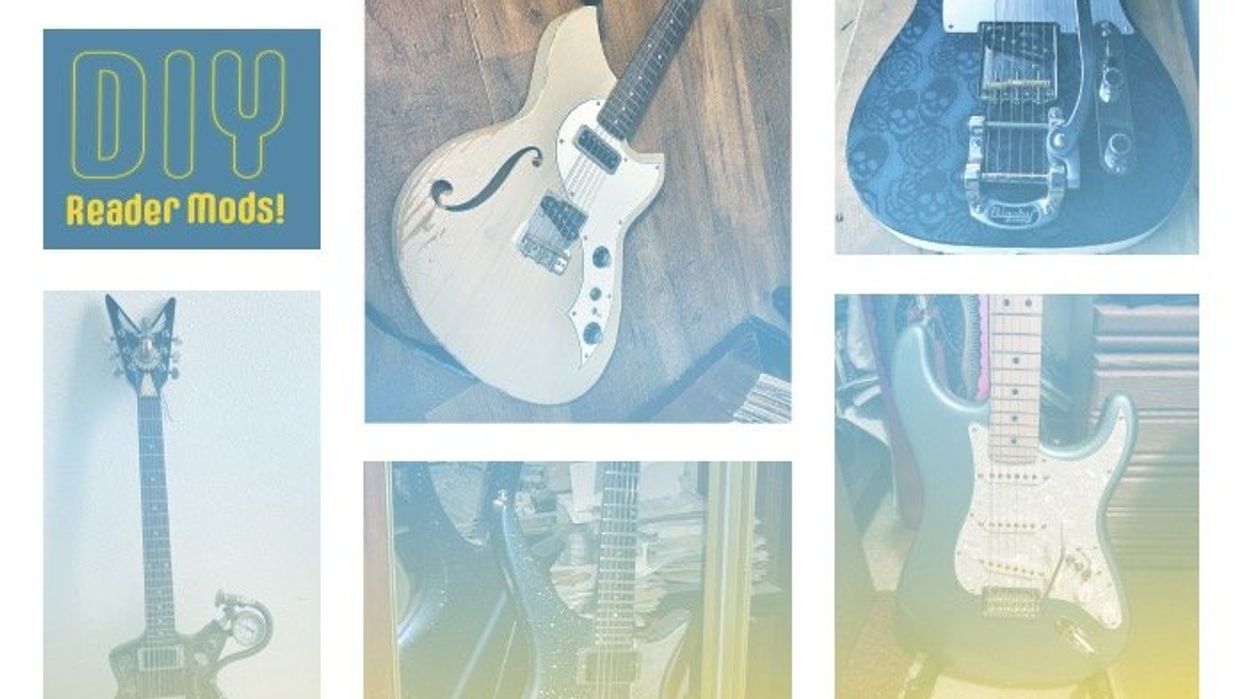
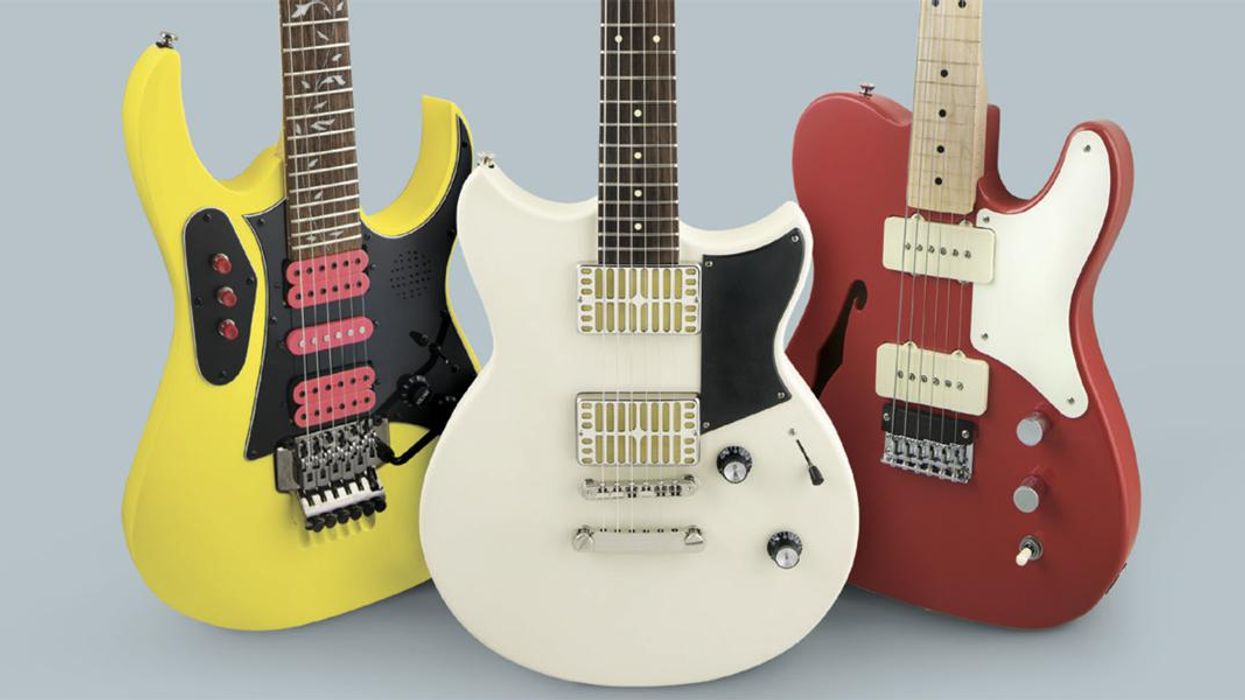
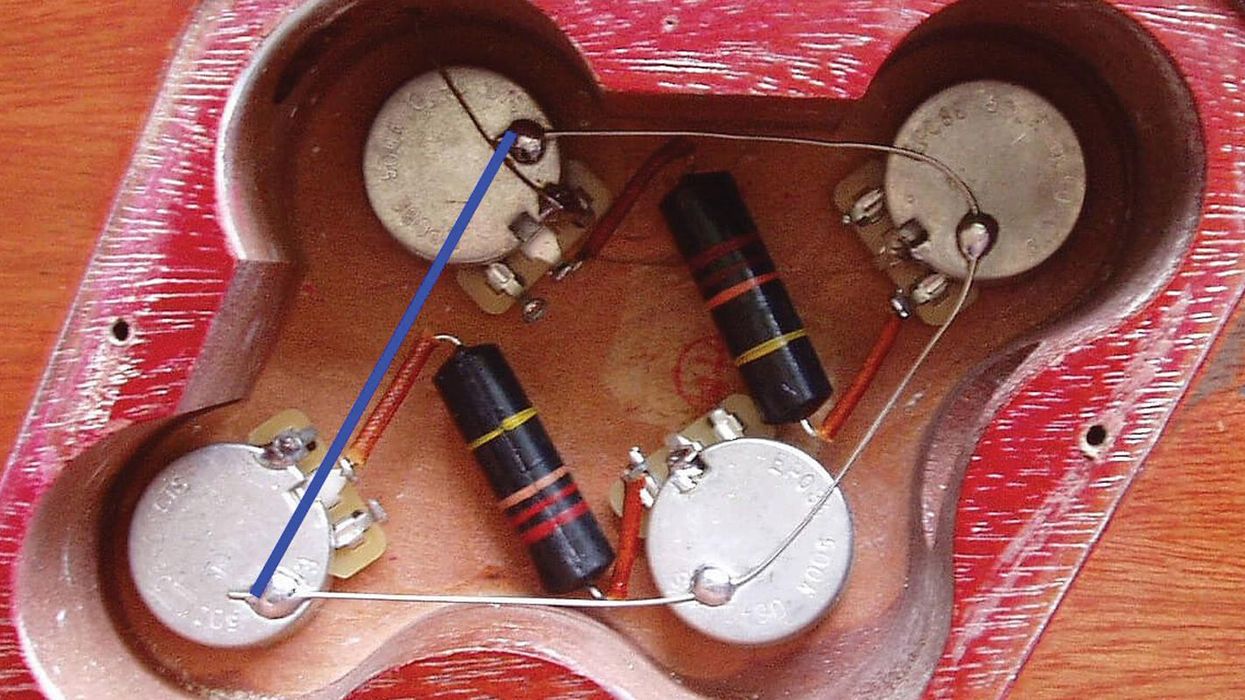
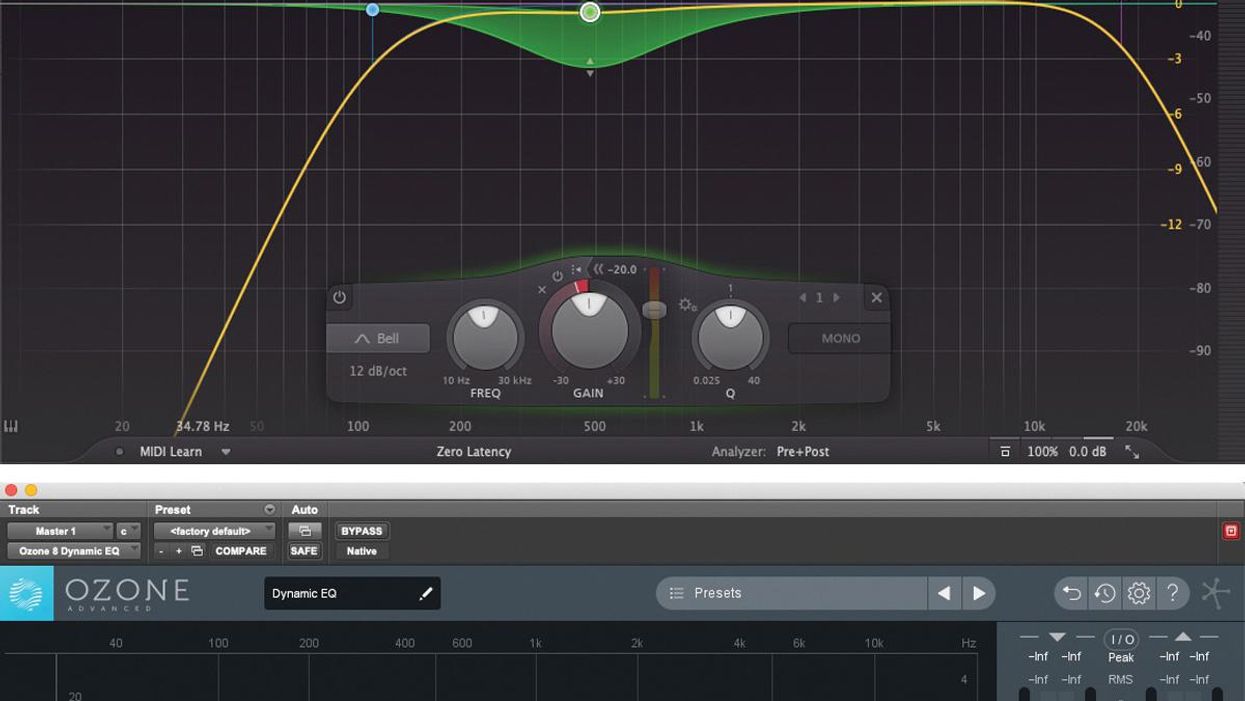

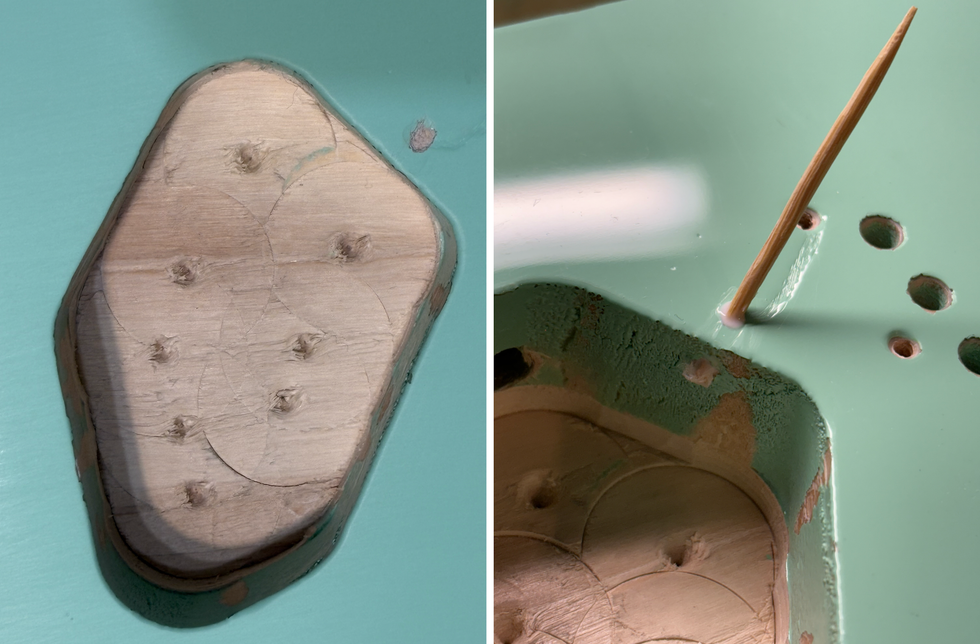

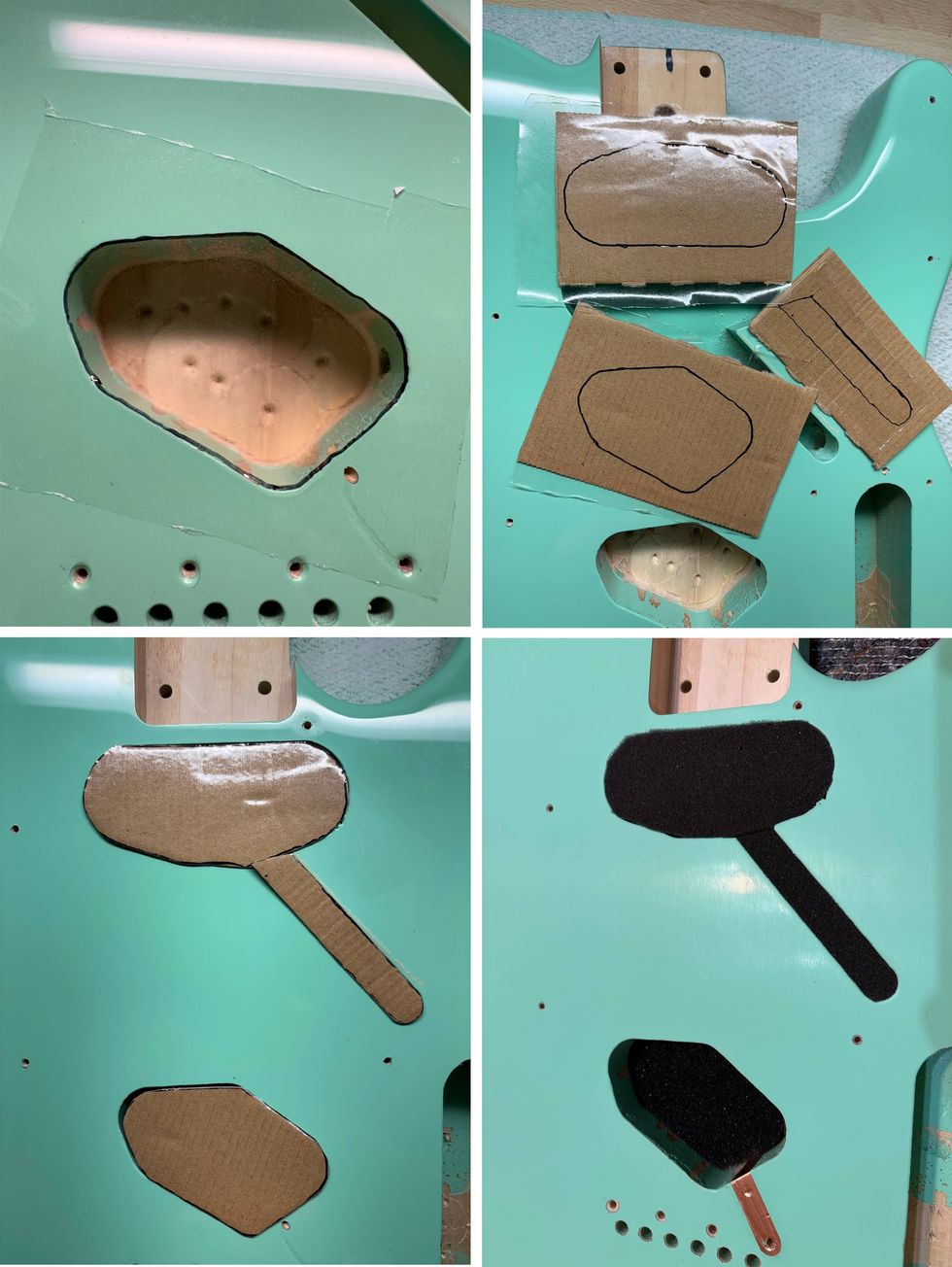
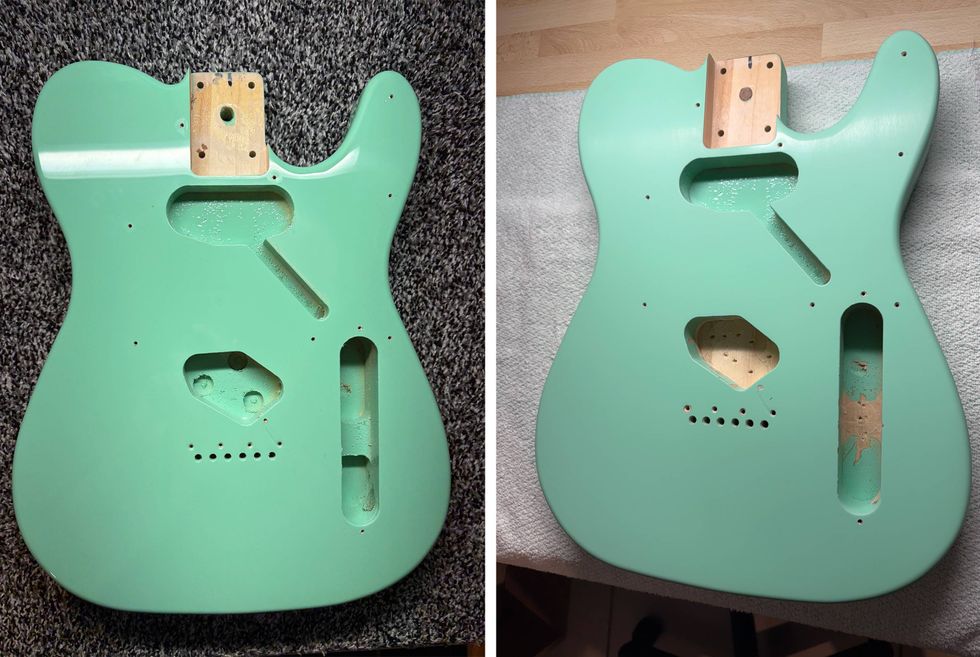






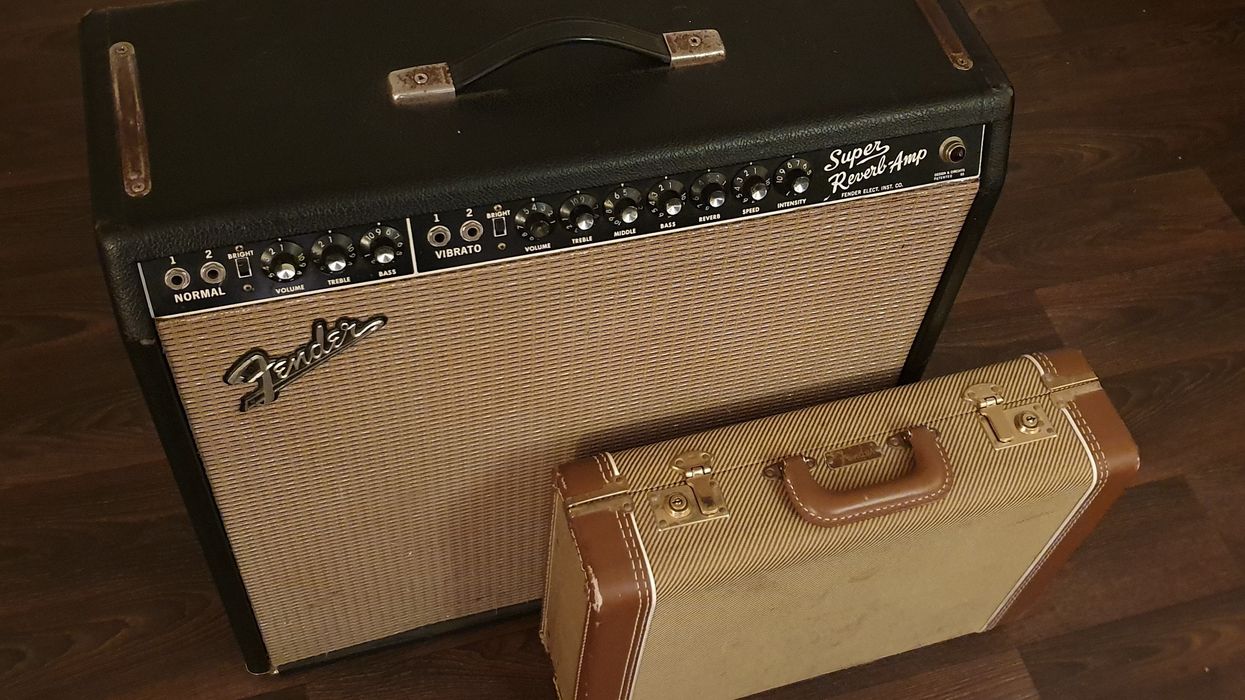

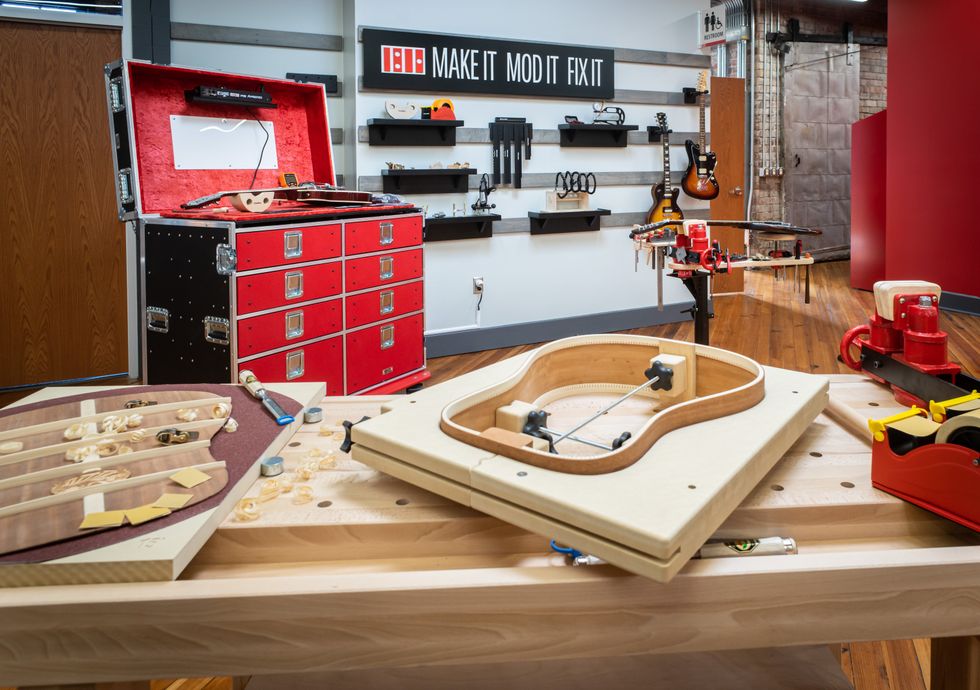
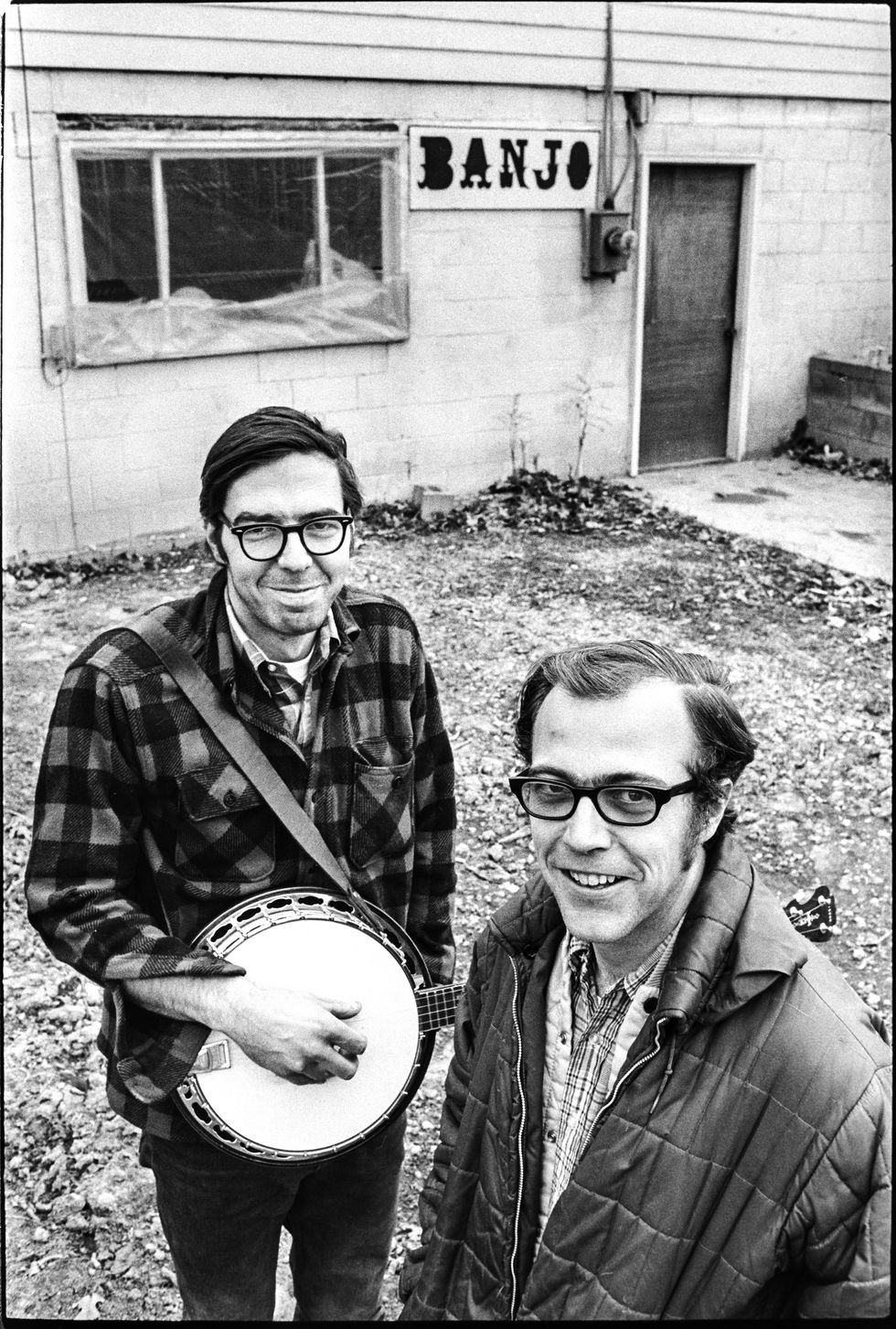
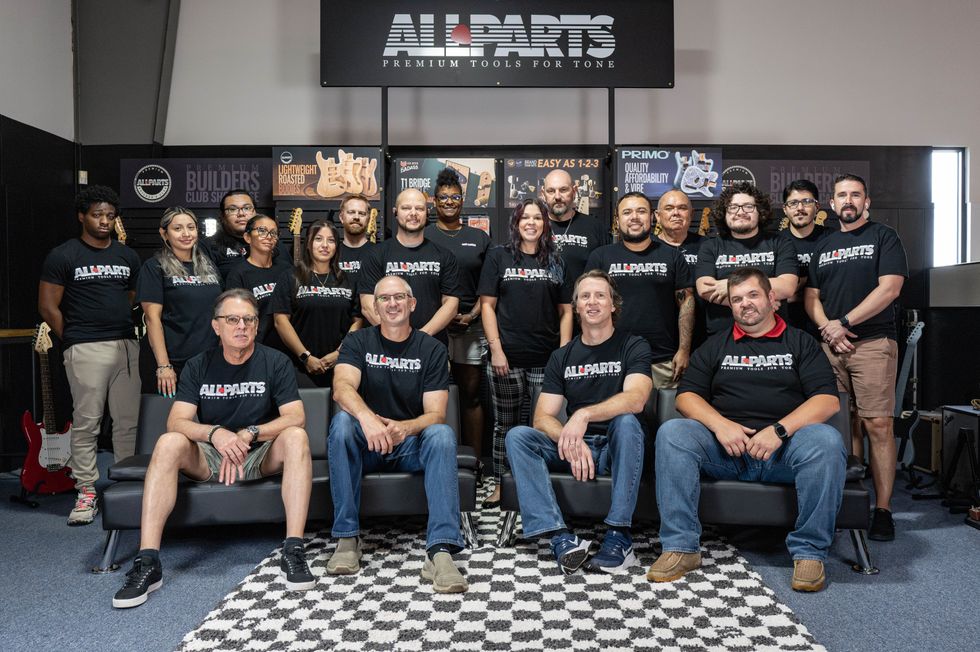 The Allparts team at their Houston warehouse, with Dean Herman in the front row, second from right.Photo by Enrique Rodriguez
The Allparts team at their Houston warehouse, with Dean Herman in the front row, second from right.Photo by Enrique Rodriguez